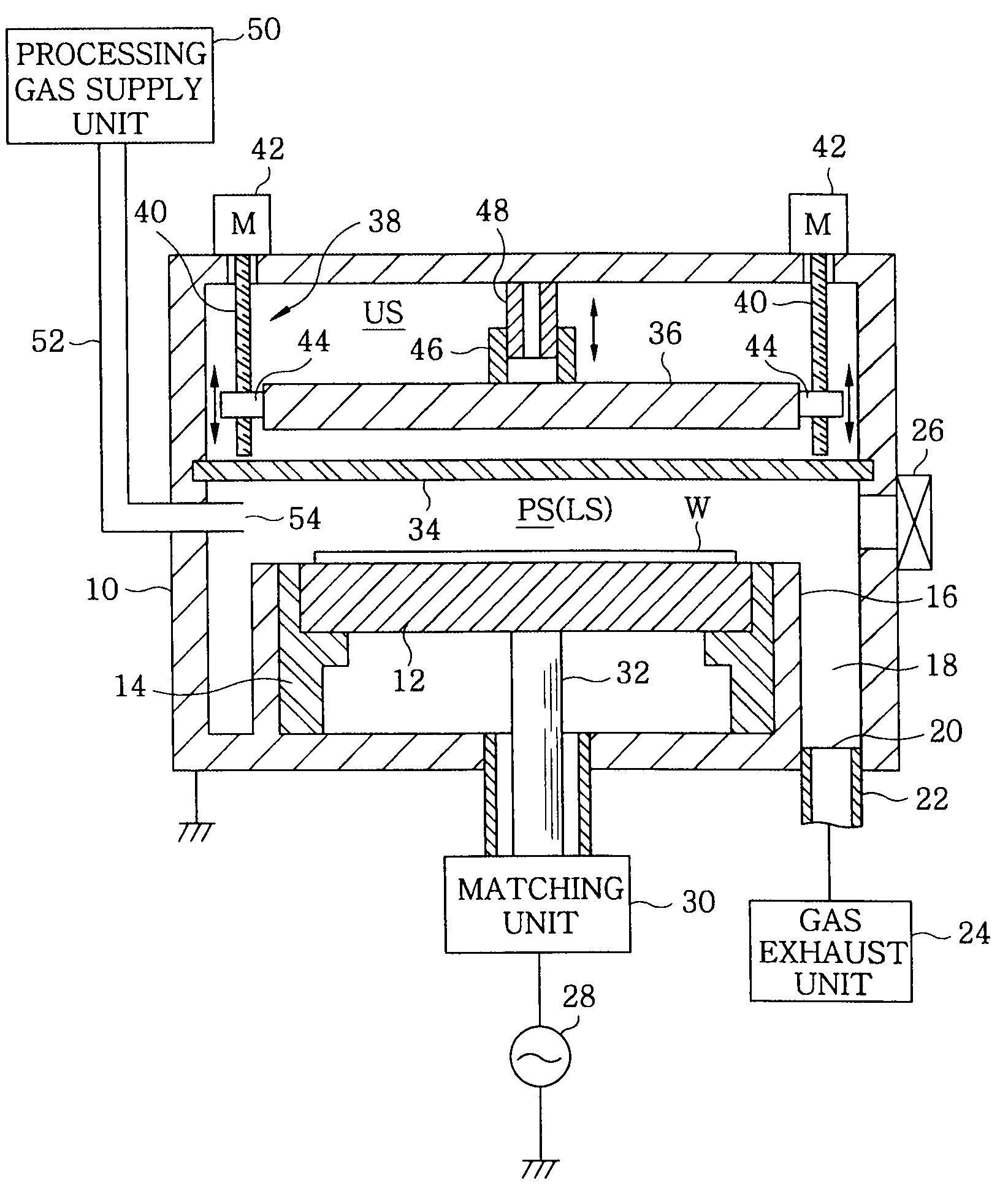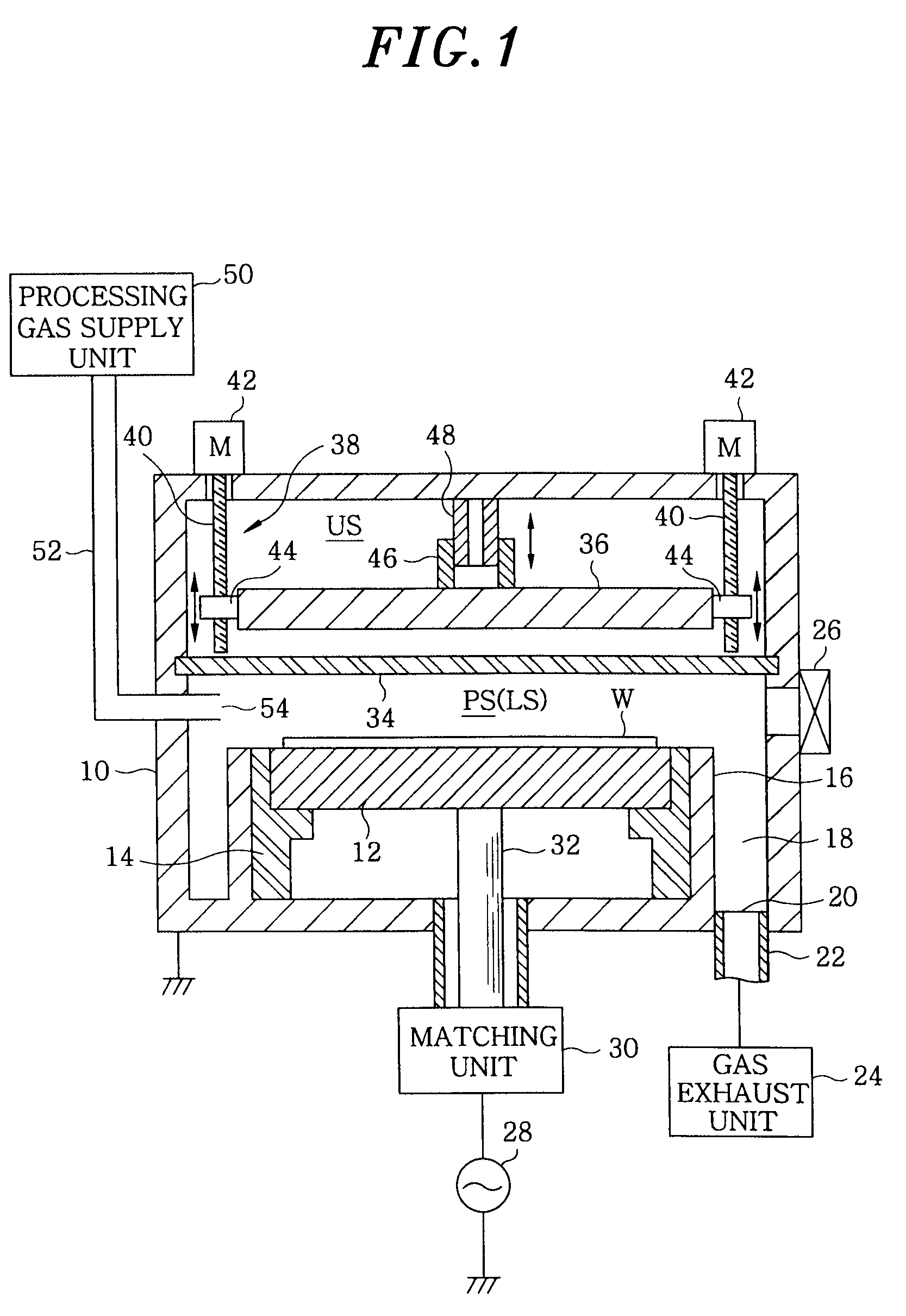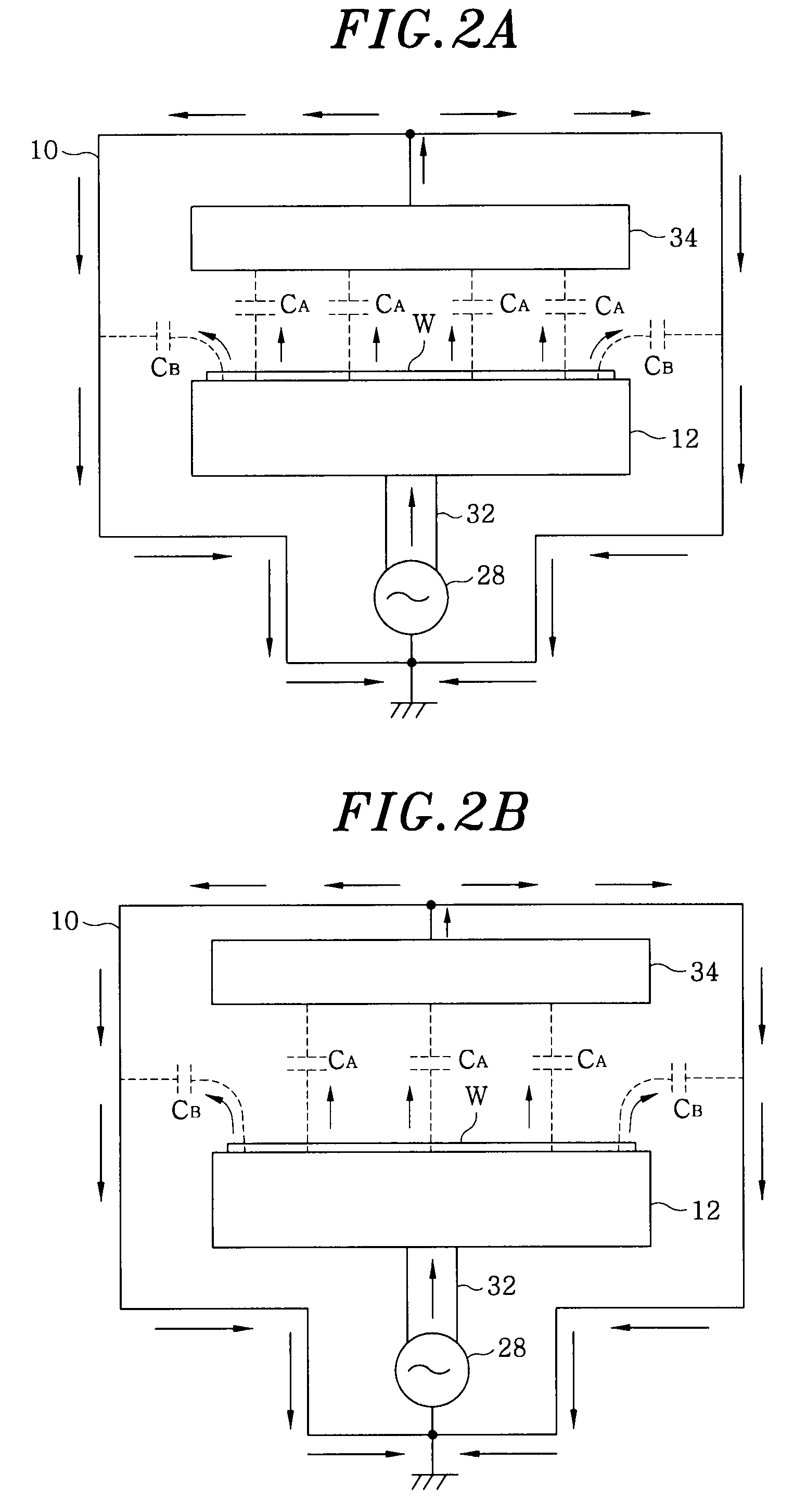Plasma processing apparatus
a plasma processing and apparatus technology, applied in the field of plasma processing apparatus, can solve the problems of non-uniform plasma processing, difficult to have a uniform plasma density in the processing space of the chamber, and the inability to insert a dielectric member in the main surface of the electrode, etc., to achieve easy and free control, improve plasma processing uniformity or production yield, and facilitate and free control
- Summary
- Abstract
- Description
- Claims
- Application Information
AI Technical Summary
Benefits of technology
Problems solved by technology
Method used
Image
Examples
first embodiment
[0034]FIG. 1 shows a configuration of a plasma etching apparatus in accordance with the present invention. The plasma etching apparatus is configured as a capacitively coupled plasma etching apparatus of cathode coupled type having parallel plate electrodes, and includes a cylindrical chamber (processing vessel) 10 made of a metal such as aluminum, stainless steel or the like. The chamber 10 is frame grounded.
[0035]A circular plate-shaped susceptor 12 serving as a lower electrode for mounting thereon a substrate to be processed, e.g., a semiconductor wafer W, is disposed horizontally in the chamber 10. The susceptor 12 is made of, e.g., aluminum, and is supported by a cylindrical insulating supporting portion 14 which is made of ceramic and vertically extends from a bottom of the chamber 10 without being grounded. An annular gas exhaust path 18 is formed between the inner wall of the chamber 10 and a cylindrical conductive supporting portion 16 vertically extending from the bottom o...
third embodiment
[0061]FIG. 4 illustrates a configuration of a plasma processing apparatus in accordance with the present invention. This plasma processing apparatus is characterized by a configuration in which the upper electrode 36 is fixed at a specific position, and a position of the lower electrode 12 is vertically varied. Specifically, a circular plate-shaped lower electrode 12 is vertically movable in a cylindrical conductor cup 80 having a bottom portion which is coupled to the lower power feed rod 32, and a height position of the lower electrode 12 is varied by actuators 82 installed outside the chamber 10 via supporting rods 84. Here, the conductor cup 80 and the lower electrode 12 may be electrically connected to each other directly or via a flexible conductor (not shown). The supporting rods 84 may be formed of an insulator, and the actuators 82 may be formed as ball screw mechanisms, a cylinder or the like.
[0062]The top surface of the conductor cup 80 is airtightly sealed by a partition...
fourth embodiment
[0068]FIG. 5 describes a configuration of a plasma processing apparatus in accordance with the present invention. In this plasma processing apparatus, the susceptor (lower electrode) 12 and the upper electrode 36 facing each other in parallel are horizontally fixed at specific positions, and a cylindrical sidewall portion 100 made of, e.g., quartz, is provided on the sidewall of the chamber 10 facing the processing space PS formed between electrodes 12 and 36. Further, in addition to the quartz sidewall portion 100, a cylindrical side electrode 102 is disposed outside of the sidewall portion 100 to be movable or displaceable in a vertical direction.
[0069]To be more specific, a cathode coupled single frequency application type is employed in this plasma processing apparatus, so that the configuration around the susceptor (lower electrode) 12 may be the same as that described in the first embodiment (see FIG. 1). Meanwhile, the upper electrode 36 serves as the shower head 88 as well a...
PUM
| Property | Measurement | Unit |
|---|---|---|
| frequency | aaaaa | aaaaa |
| dielectric constant | aaaaa | aaaaa |
| frequency | aaaaa | aaaaa |
Abstract
Description
Claims
Application Information
 Login to View More
Login to View More - R&D
- Intellectual Property
- Life Sciences
- Materials
- Tech Scout
- Unparalleled Data Quality
- Higher Quality Content
- 60% Fewer Hallucinations
Browse by: Latest US Patents, China's latest patents, Technical Efficacy Thesaurus, Application Domain, Technology Topic, Popular Technical Reports.
© 2025 PatSnap. All rights reserved.Legal|Privacy policy|Modern Slavery Act Transparency Statement|Sitemap|About US| Contact US: help@patsnap.com



